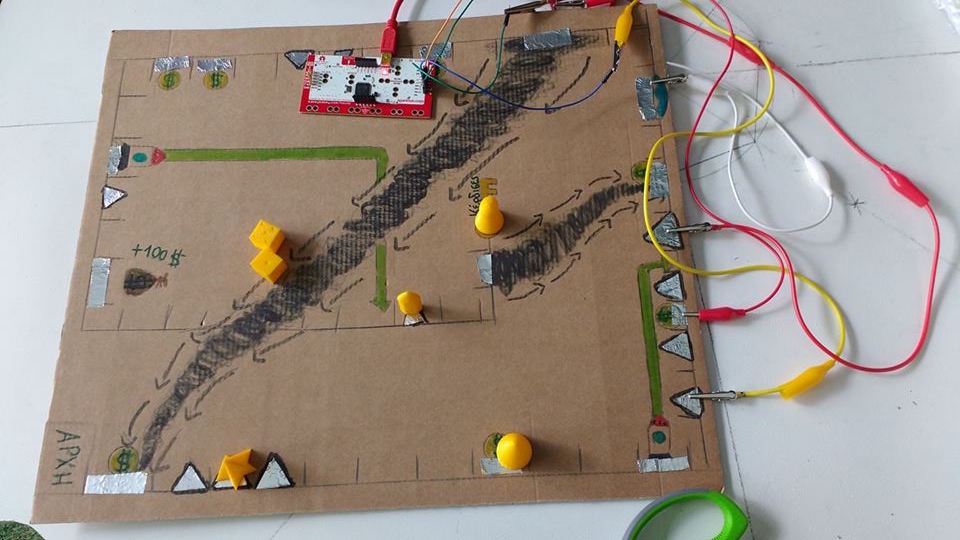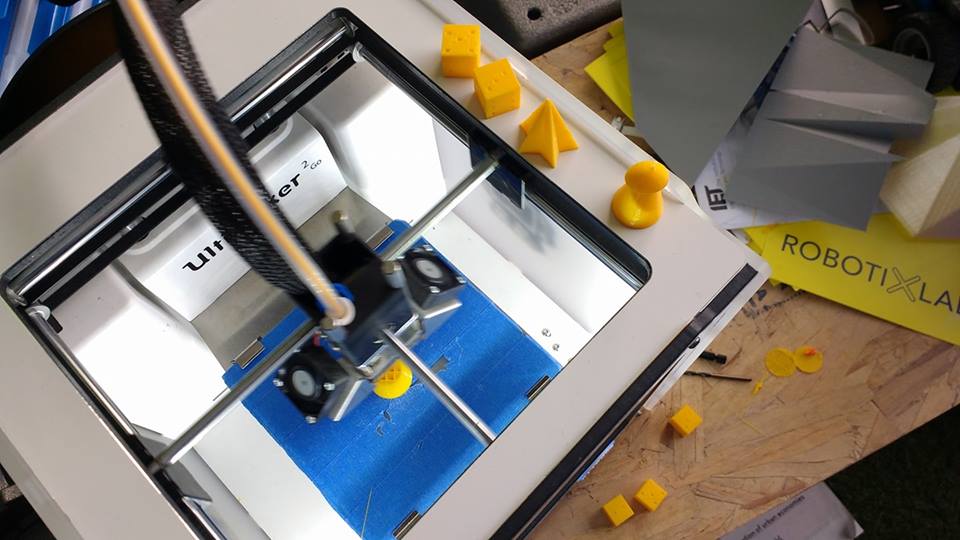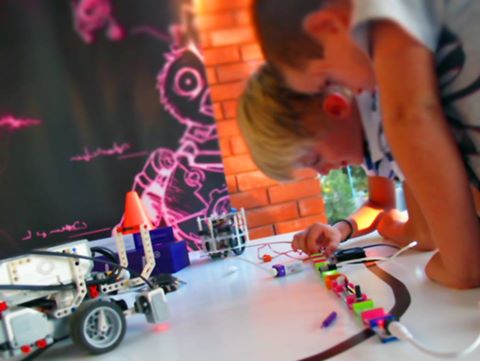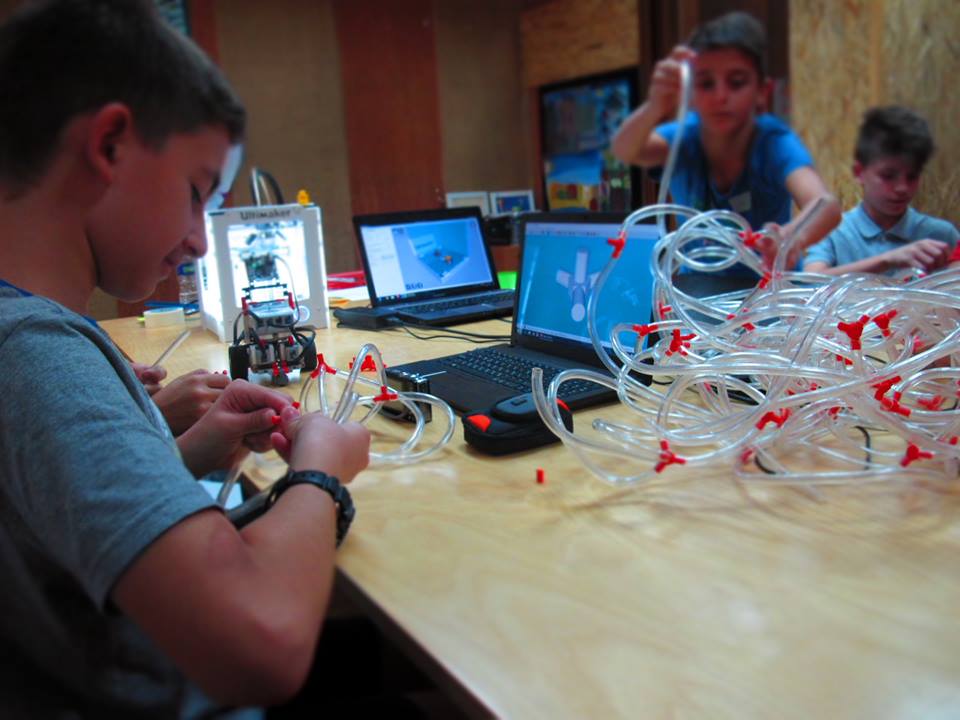Organization: robotixlab, private organization specialized in ‘edutainment’
Location: Thessaloniki, Greece
Website: here
Type of workshop: Game design as a project based learning platform
Ages: 11-16 years old
-
Description.
During the workshop the participants have to analyse the attributes of a game and then brainstorm and design their very own, combining different materials and/or technologies (electronics, robotics, 3d printing, etc)
A game design workshop lasts between 4-5, 90 mins sessions and the participants work in teams of 3. Initially there is a themed based scenario, like being a team of creatives hired by a big games industry company in order to design their next big thing! There are no limits as if it has to be a video game, a board game, or a sports game but it has to be related to technology at some point.
The teams begin by performing an online research trying to analyse the structure of a game and what are the ingredients for its success. All their effort is documented by themselves using text, pictures and video so at the end they can produce a presentation.
Then, they brainstorm in order to come up with a rough idea of what type of a game they want to invent and begin to build up the whole concept.
Prototyping comes next and it can be anything from lego bricks, art and crafts using everyday items like empty water bottles, rubber bands, empty cereal cardboard boxes to custom designed 3D printed parts and software made by the team in order to control or run the game.
Test, experimentation and evaluation comes next and then back to redesigning and modifying the prototype to improve the gaming experience for the user.
It the end, each team presents their final prototype using text and media material from the whole procedure.
During the reflection- evaluation phase, every student thinks and expresses his/her feelings about the project, suggests how to change the structure of the procedure to make it even more fruitful and proposes improvements for their final product, if more time was allowed.
-
Background of practice.
The workshop uses an out of the box learning methodology that promotes mistakes and embraces failure so students can experience how important it is to make mistakes in order to analyse, evaluate them and move on to the next level. The workshop is based on iterative design cycles, collaboration, working in teams and tinkering. The fact that the students are able to make things using their hands gives them an important skill for their future. In addition to this, they experience a visual as well as a ‘hands on’ approach and thus they develop a better understanding of the related issues.
As tools for their task the participants use PCs or Laptops, the programming environment of Scratch, open source 3D design programs such as 123D Design, Tinkercad or Sketchup, the makey makey platform, the arduino physical computing platform, 3D printers, scissors, hot glue guns, as well as materials such as cardboard, aluminum foil, sharpies, rubber bands, balloons, table tennis balls, glue, LEDs, buzzer, cables, crocodile clips, batteries, battery boxes, etc.
-
What is being learned-skills developed.
Participants develop skills in coding, crafts, design, electronics, 3D design and 3D printing. The important thing is that all this knowledge happens in a ‘learning by doing’ fashion. They also develop skills such as teamwork, creative and innovative design, they learn how to do project planning, documentation, presentations and how to communicate their ideas.
-
Successes- Difficulties.
A key for the success of this workshop is the ‘gamification’ of learning. Students get engaged quickly with the game design challenge and have an open blank canvas to be creative and innovative.
One variable that can cause difficulties is the time it takes to finish the whole project, which is usually defined according to the group’s dynamics. When the allocated time elapses it is absolutely fine if a team has not managed to prototype a fully working product. In this case we try to work on that and analyse (in the reflection phase) what changes could be made in order to have achieved a more “finished” result.



